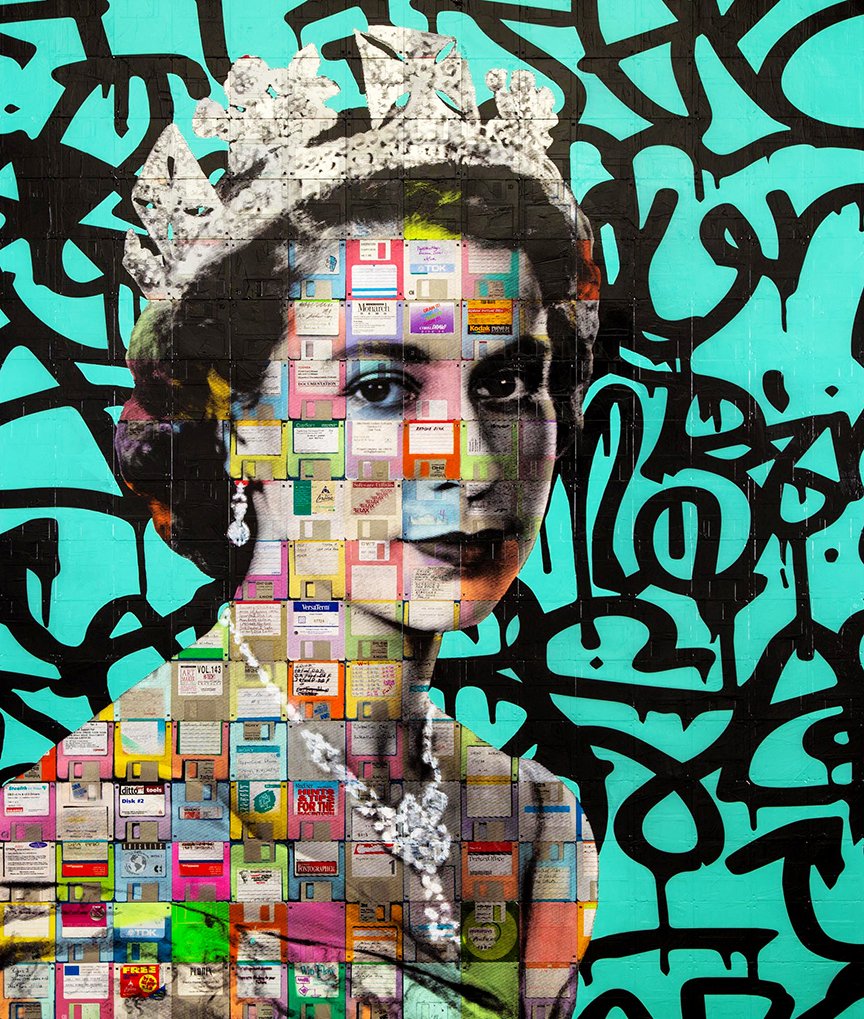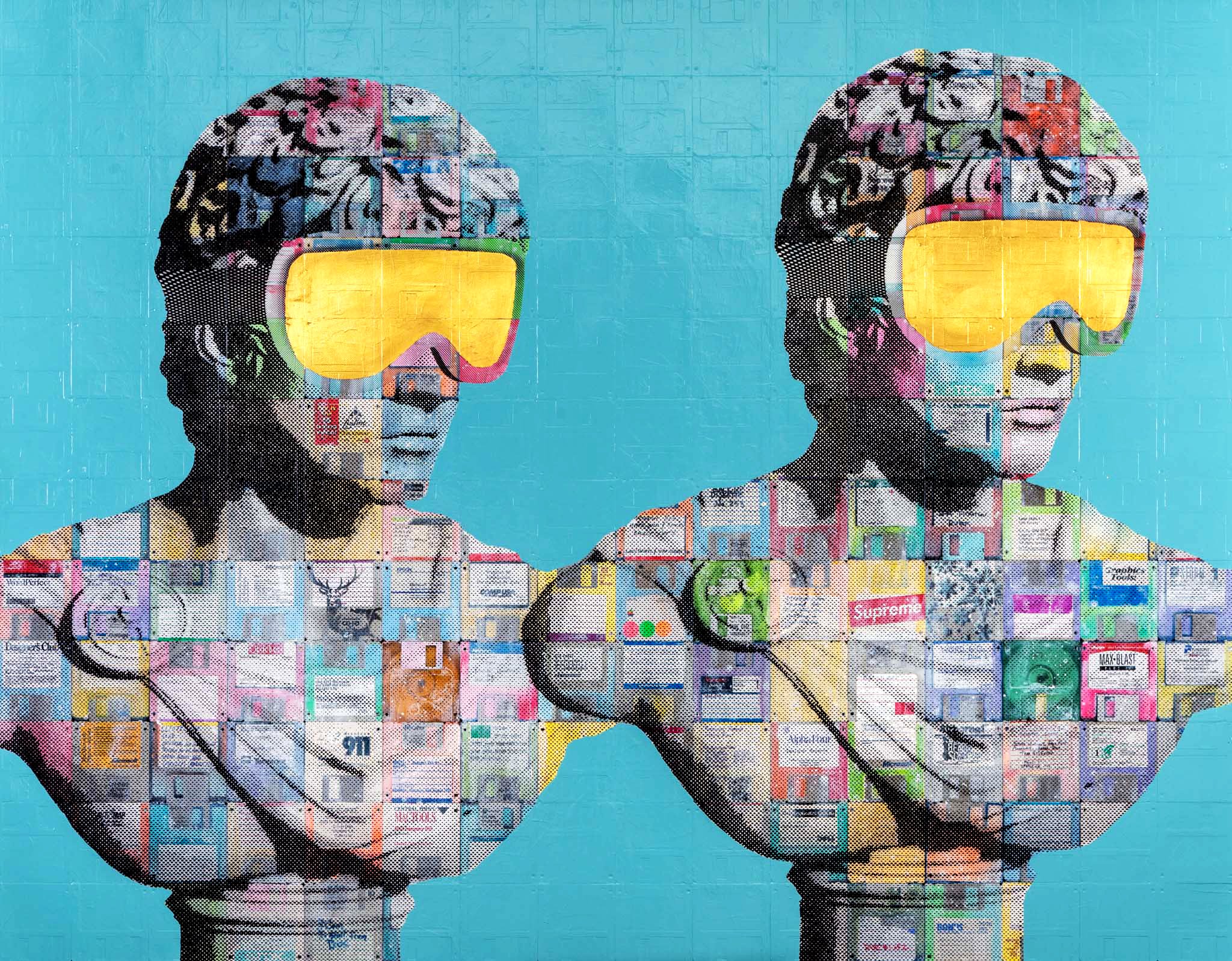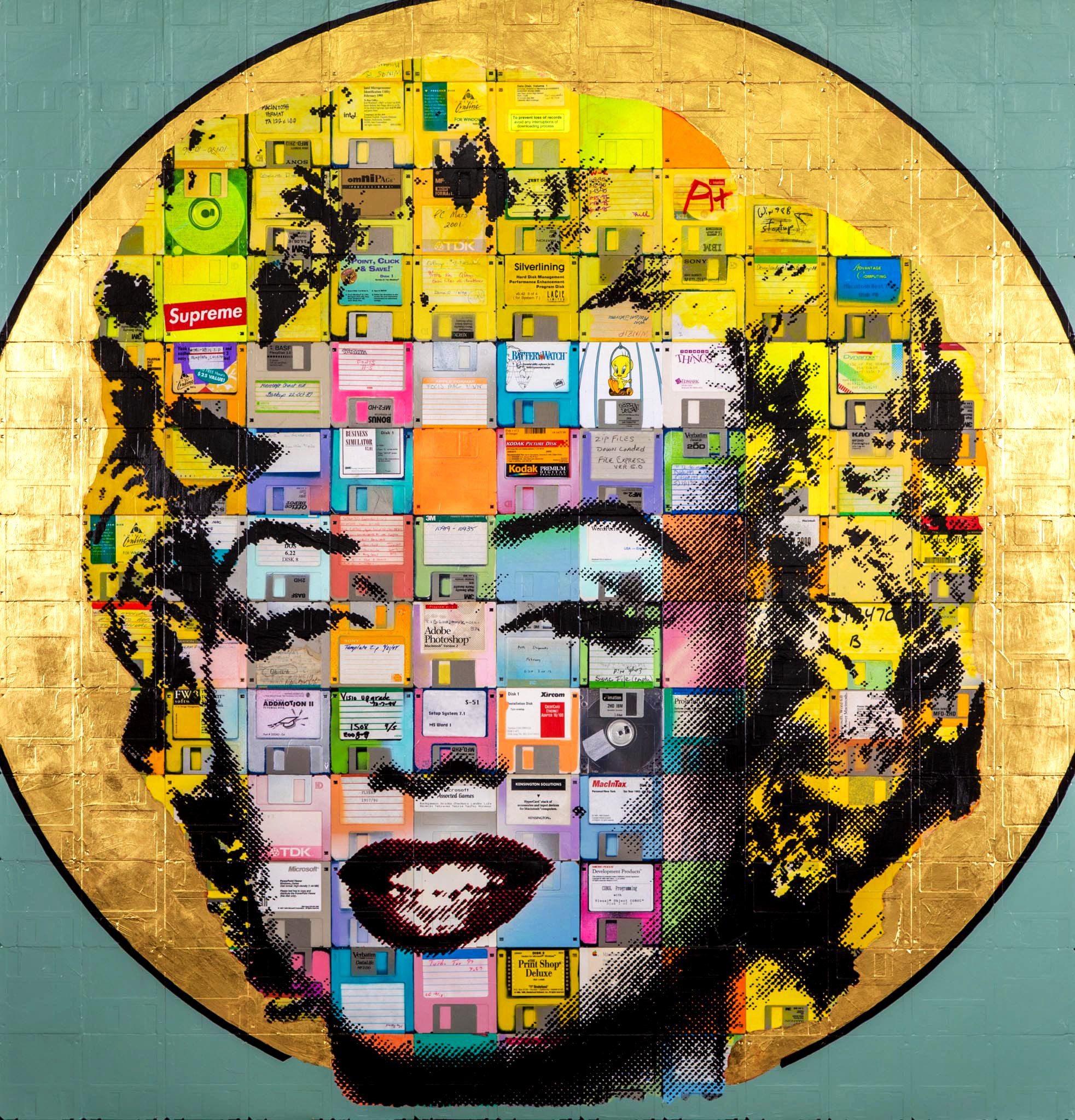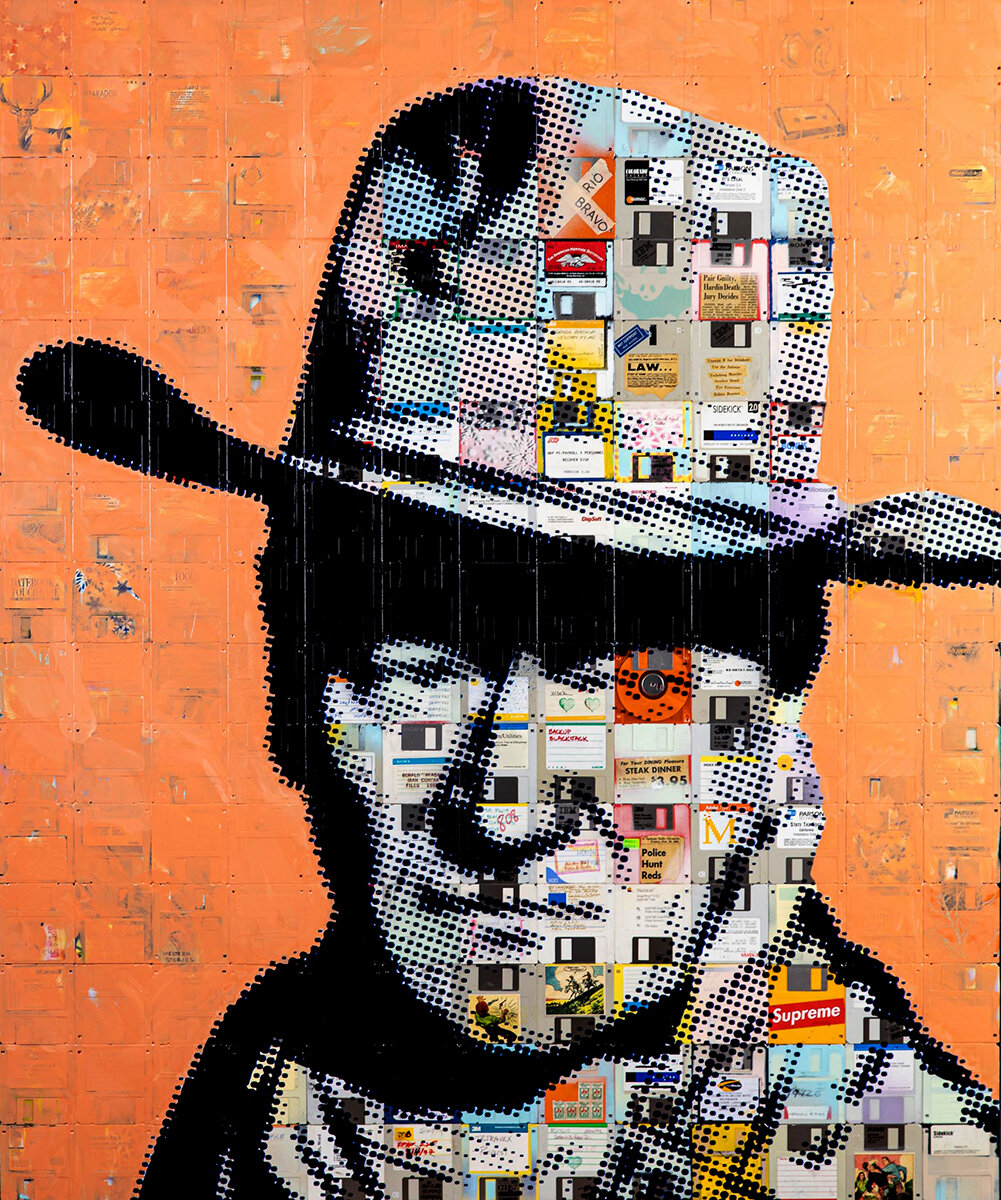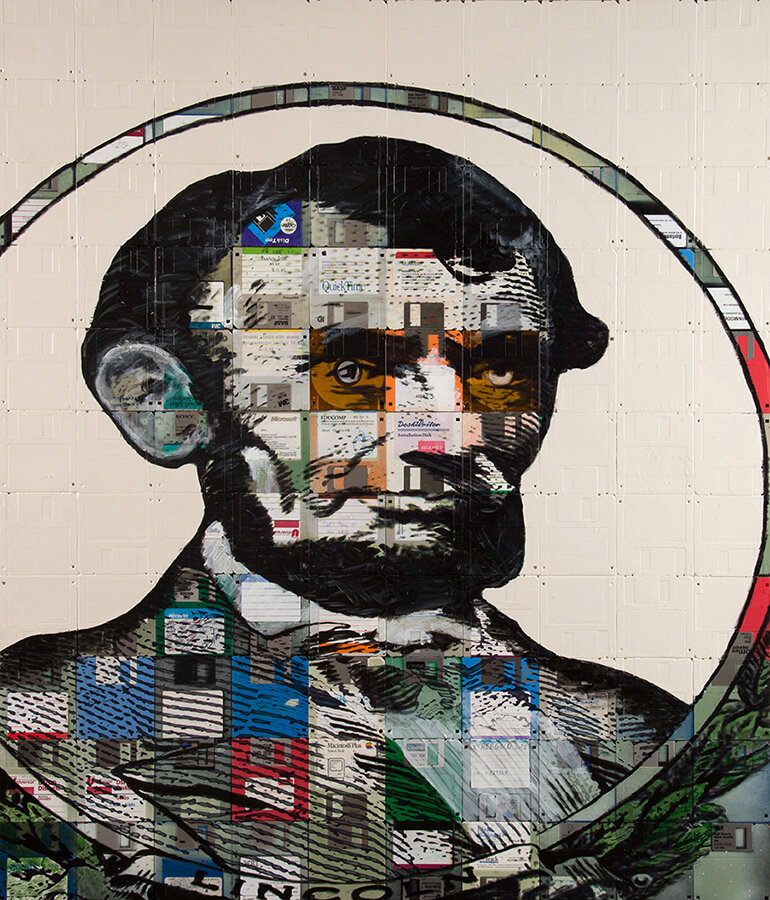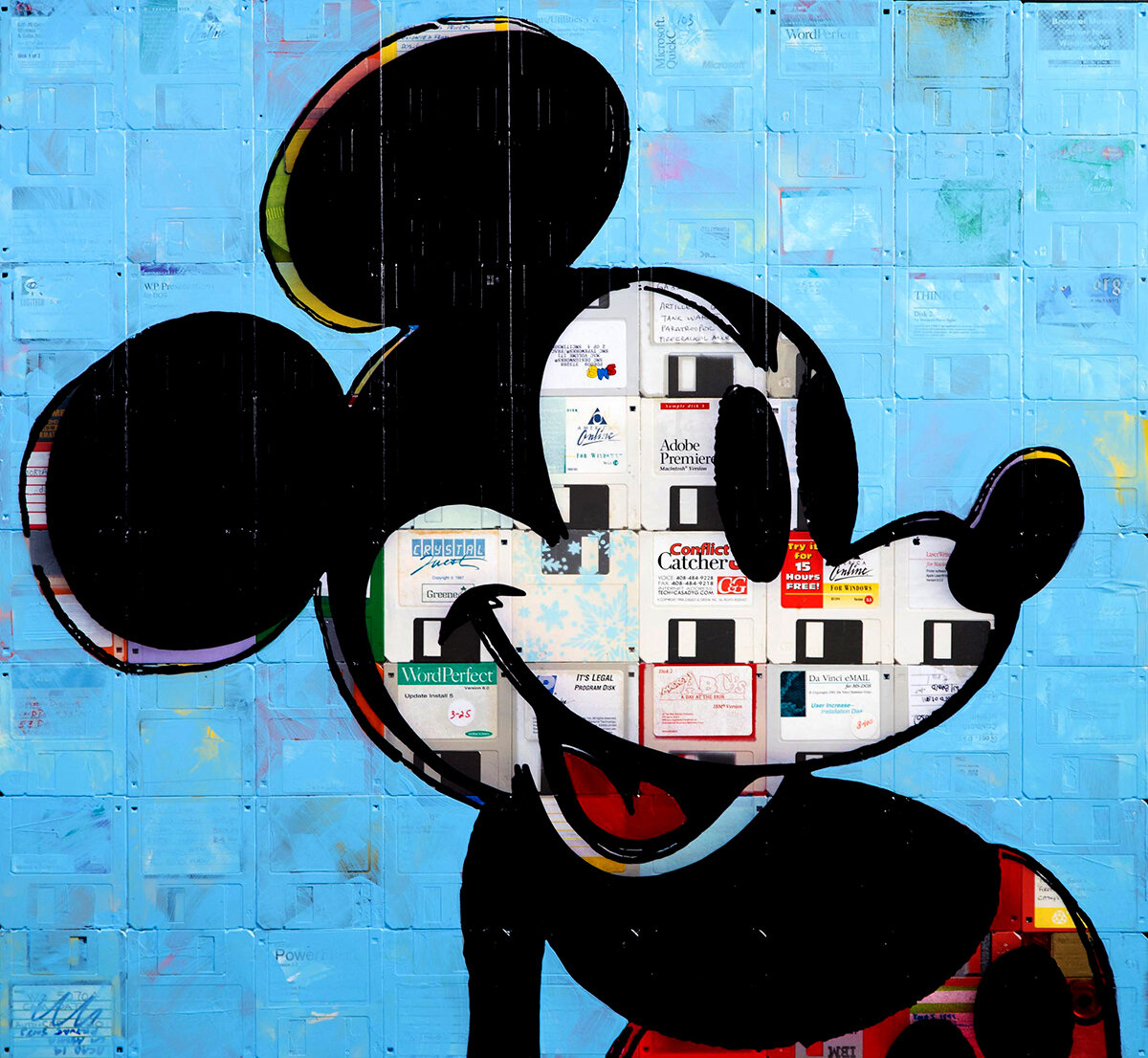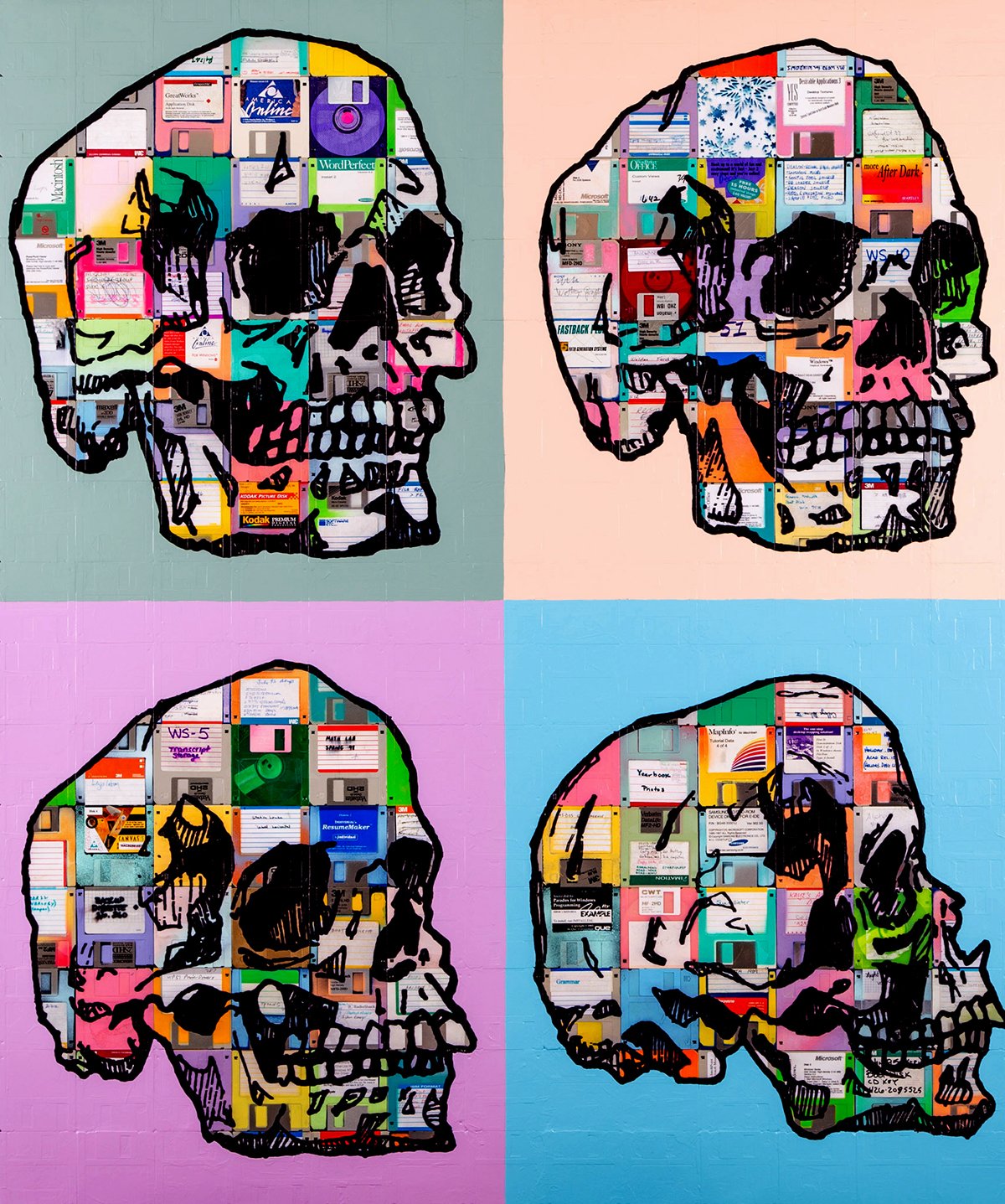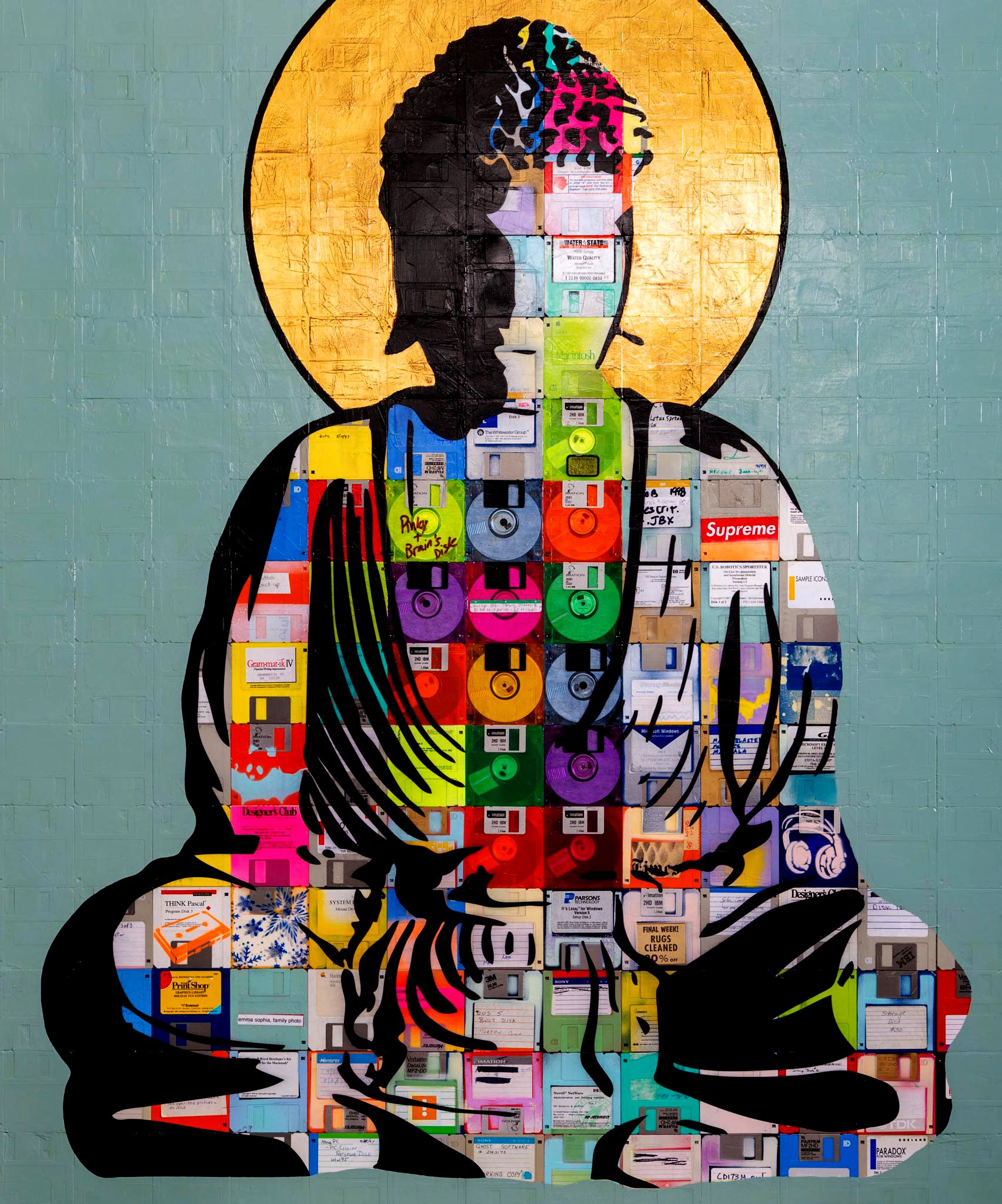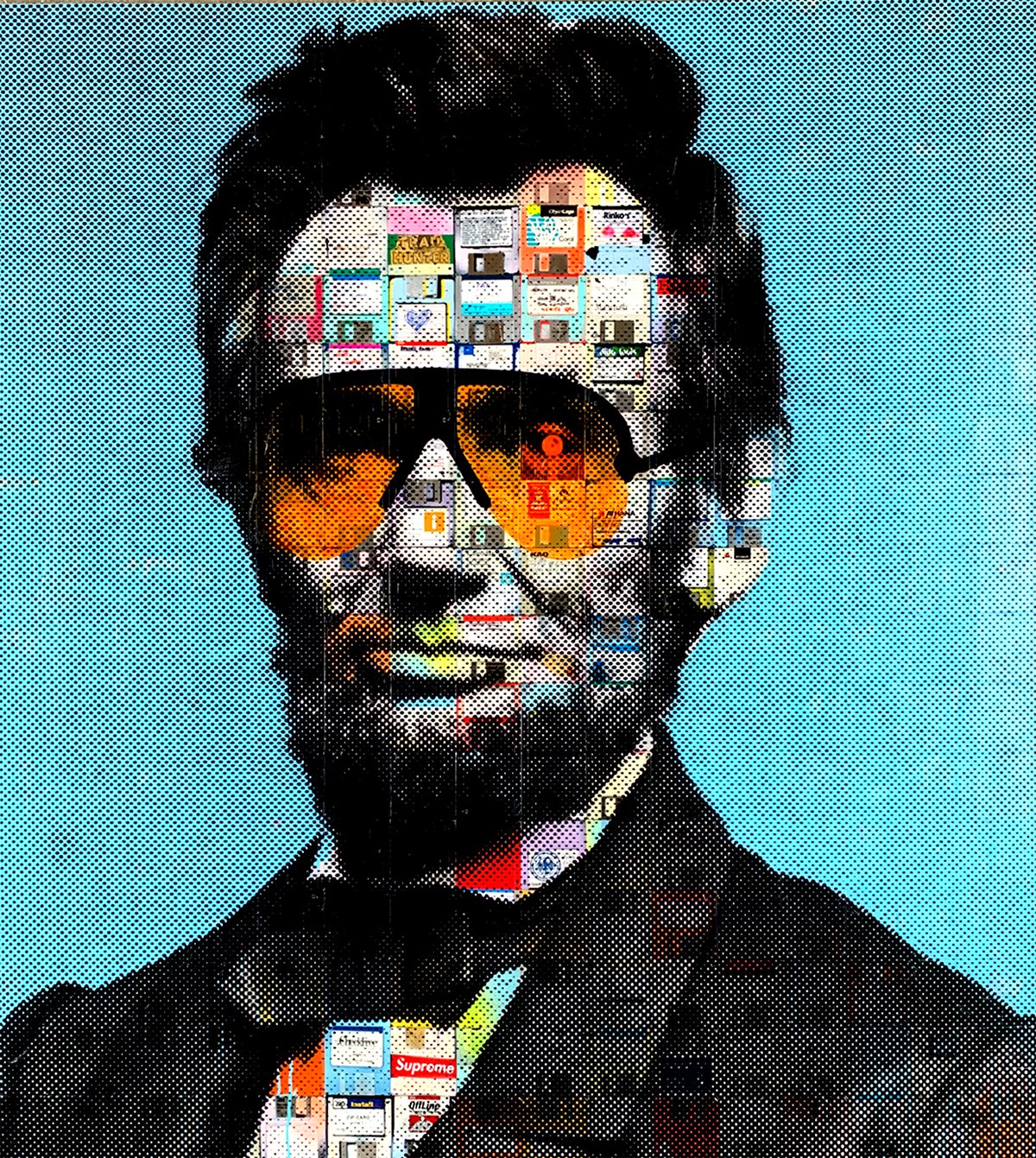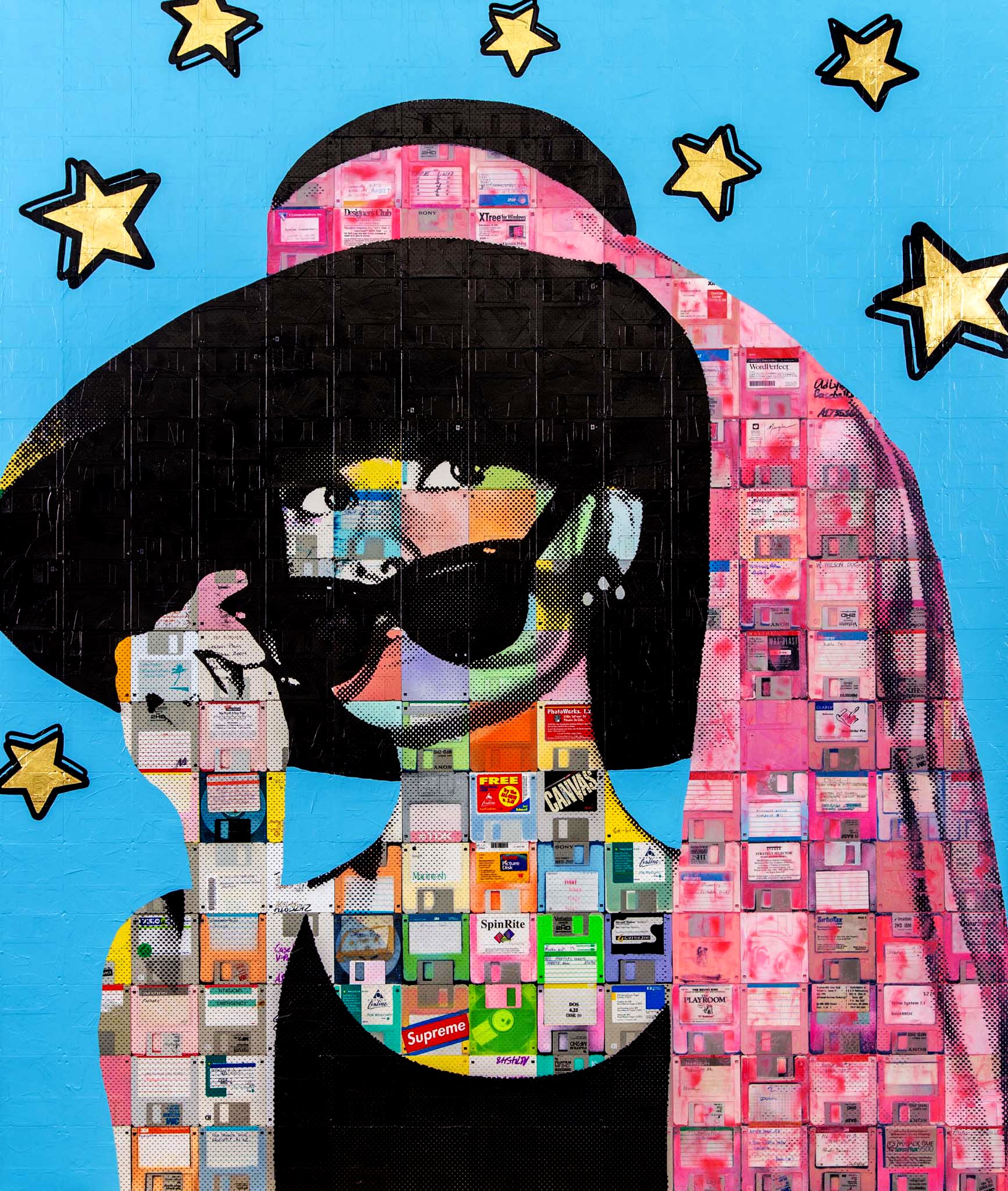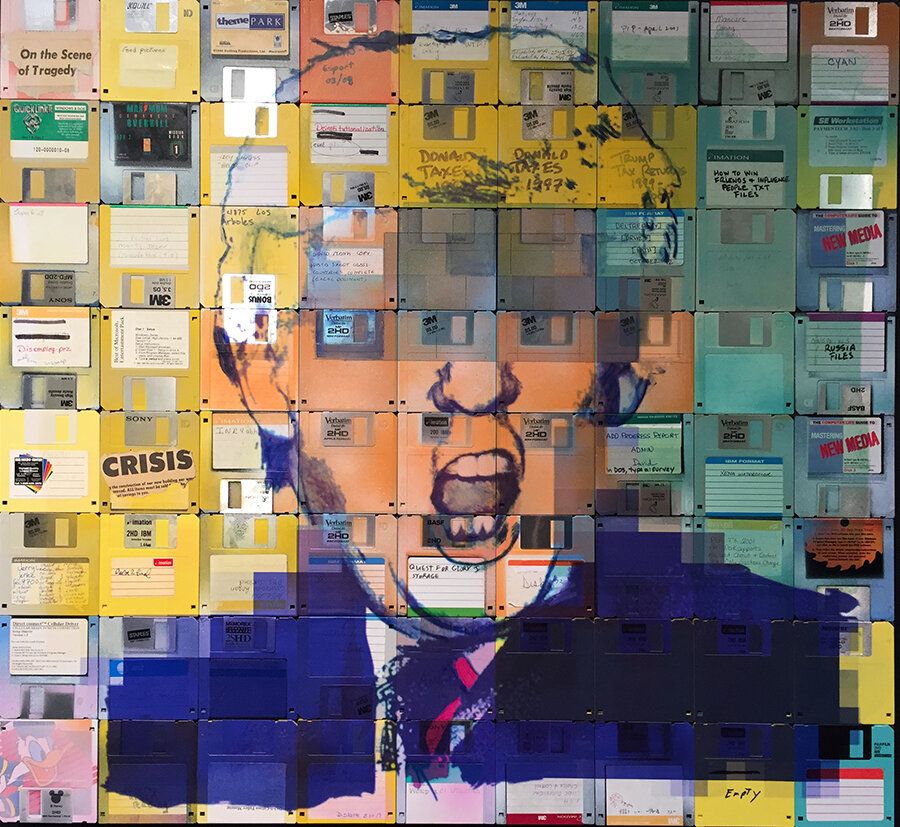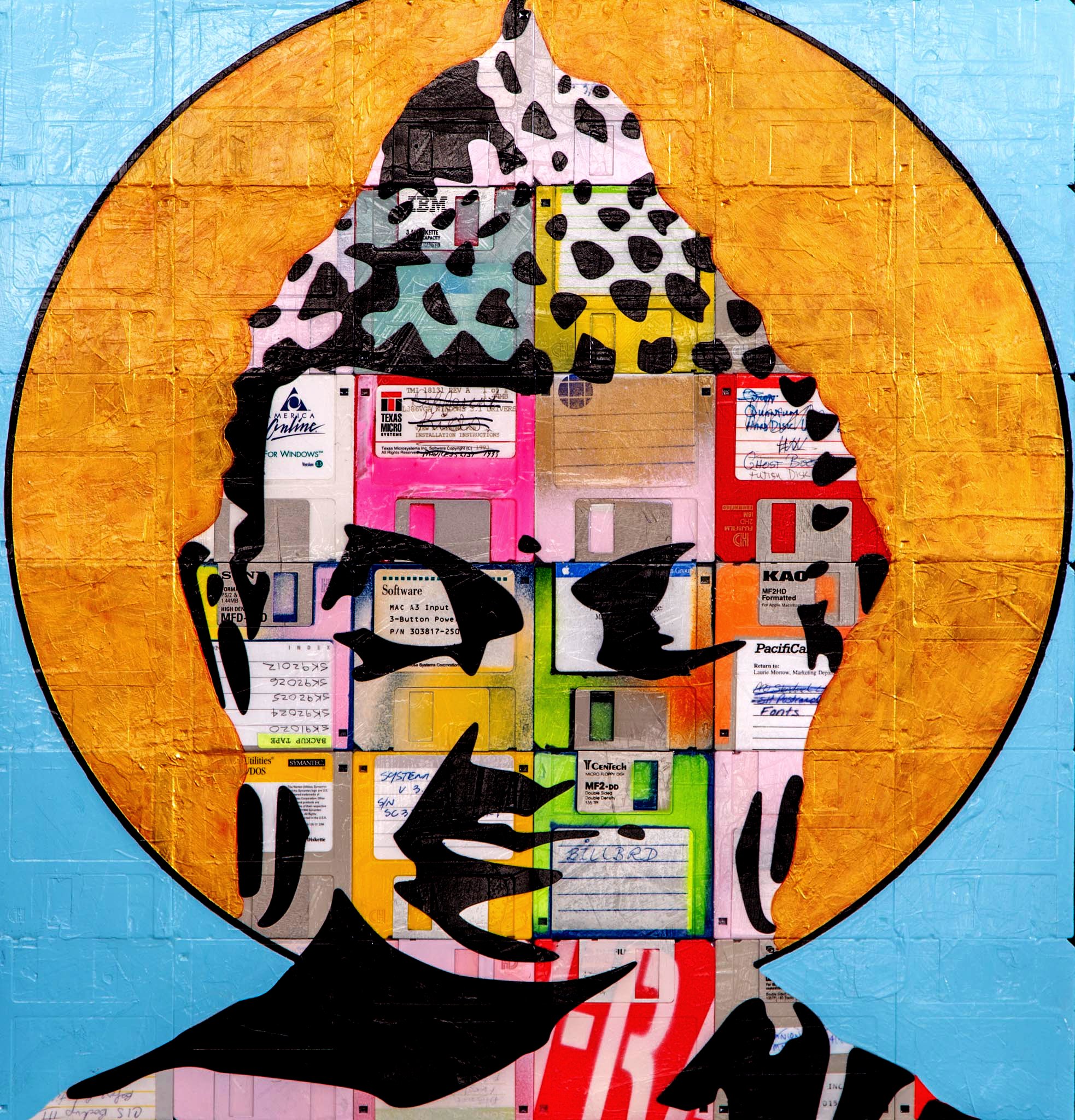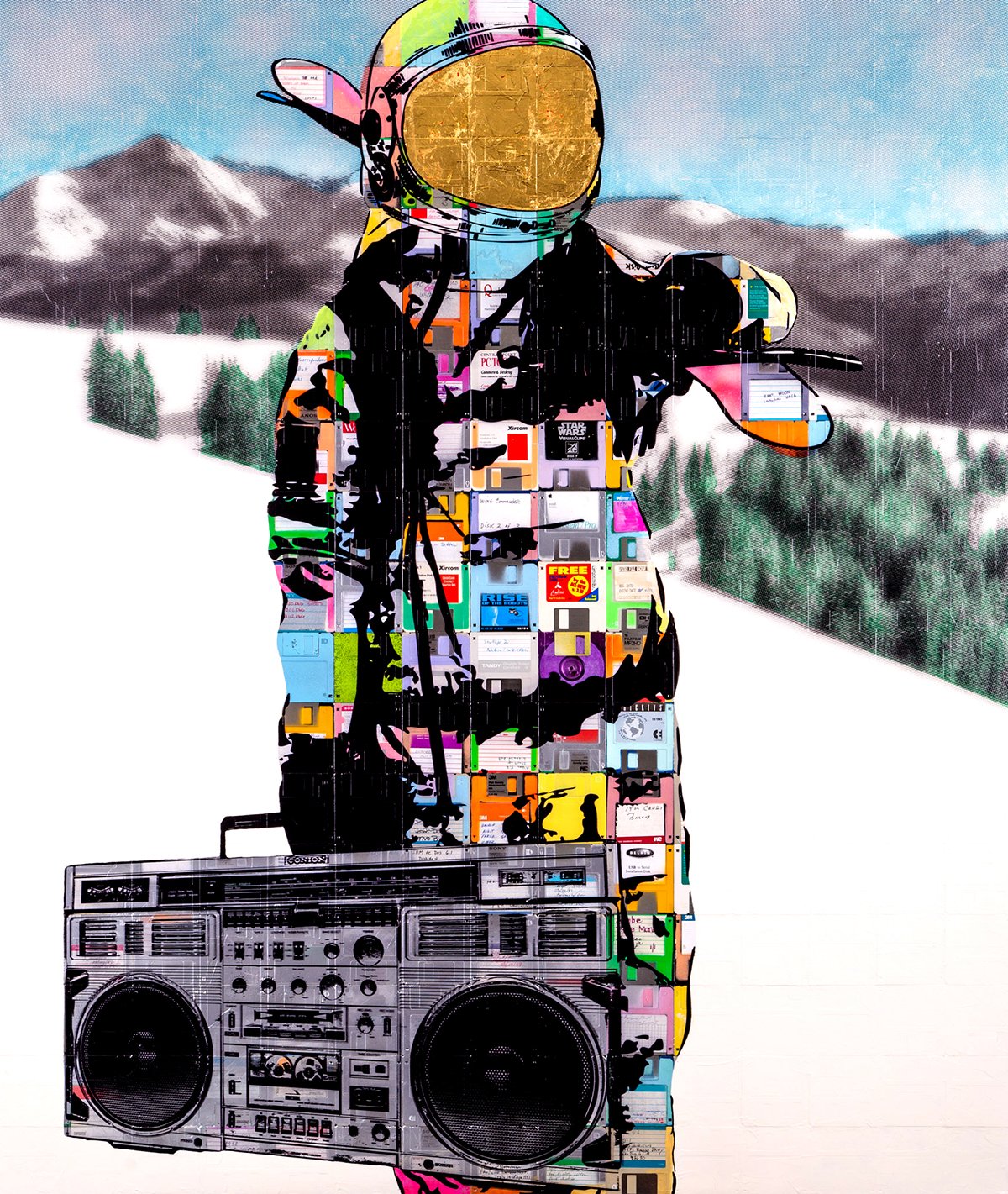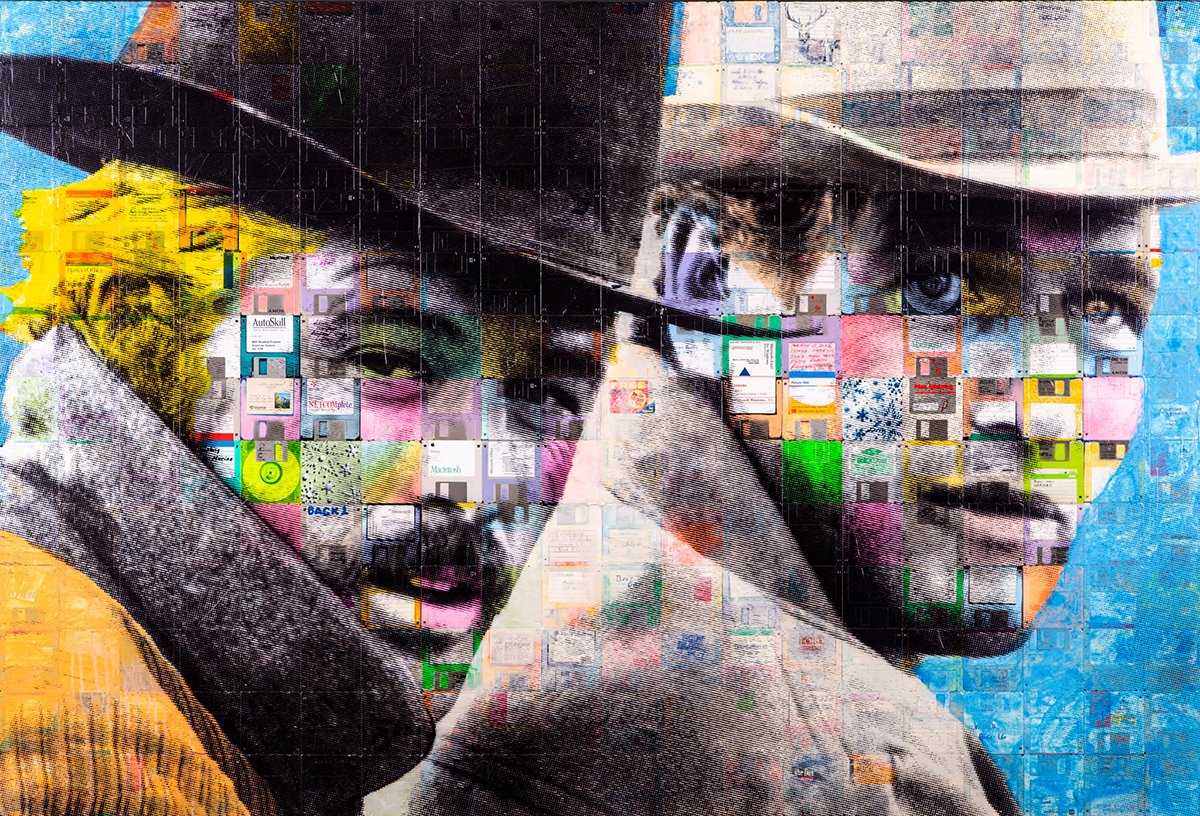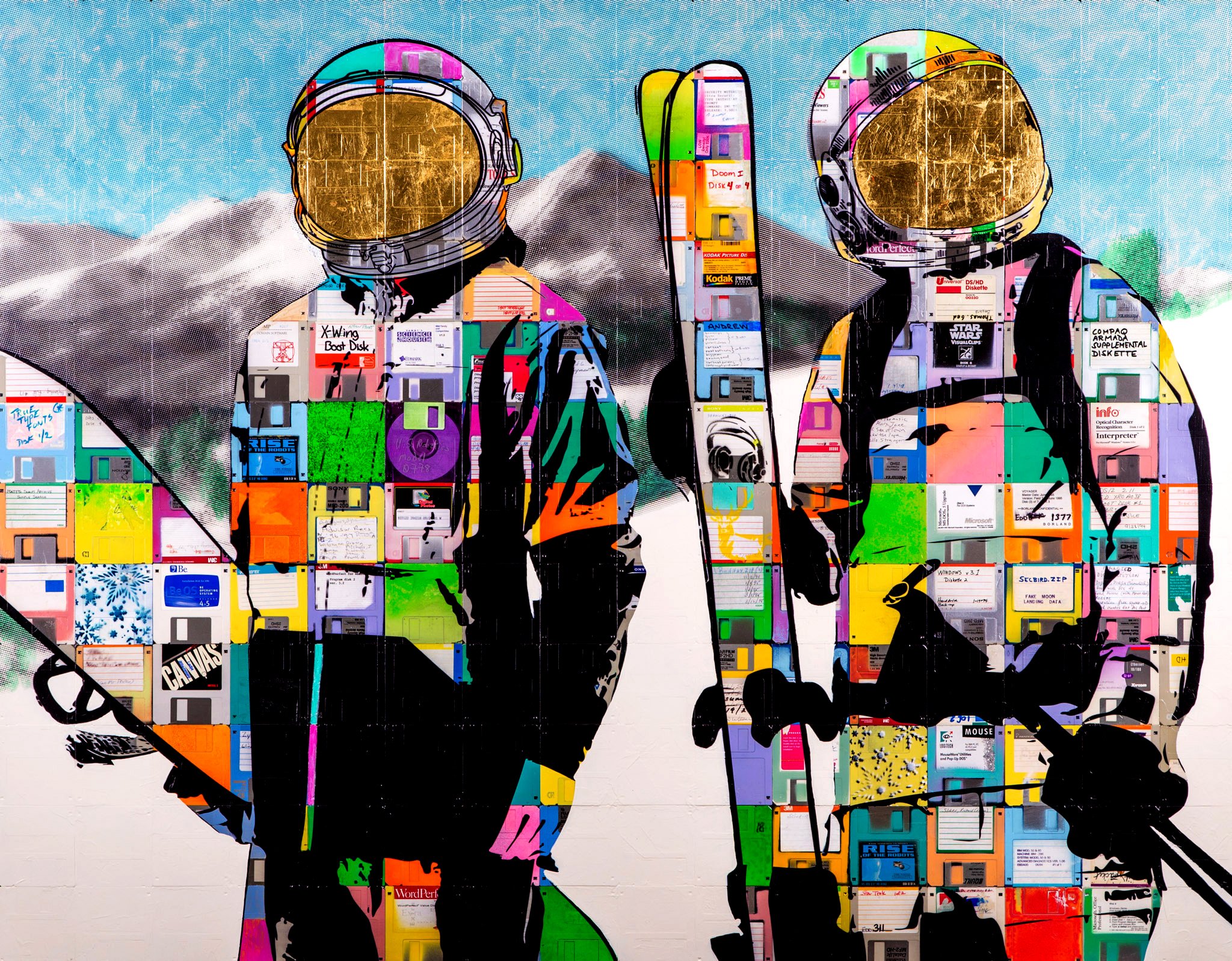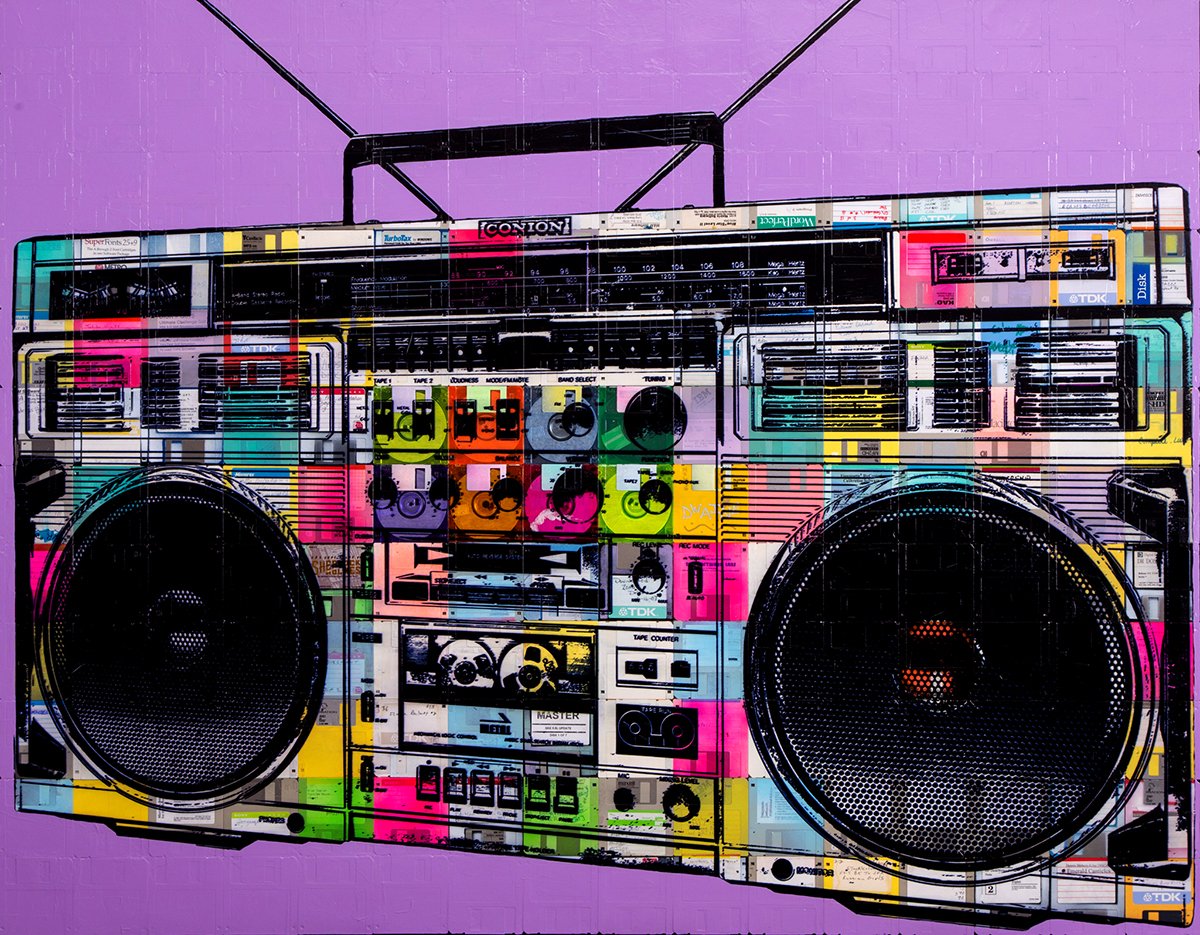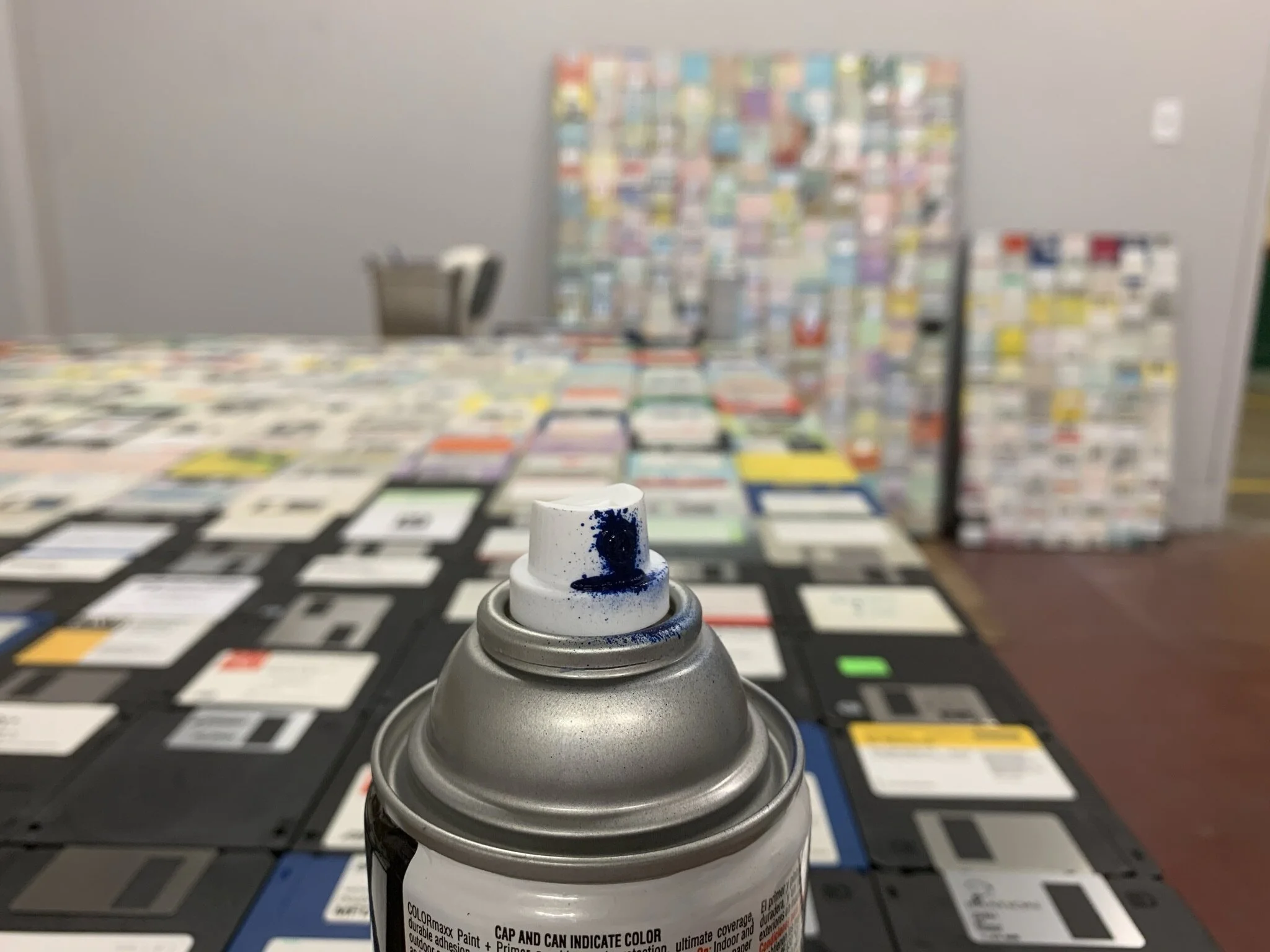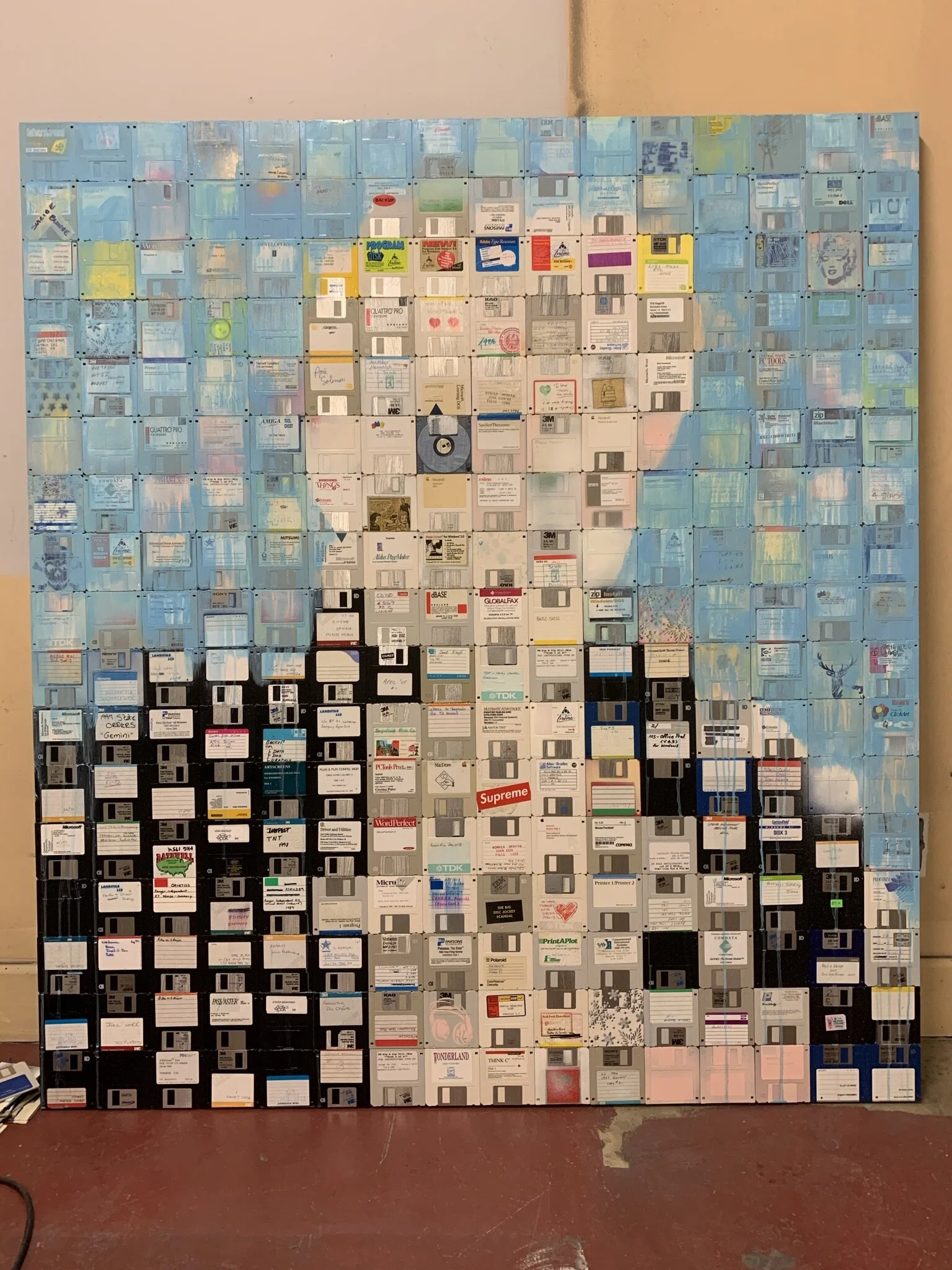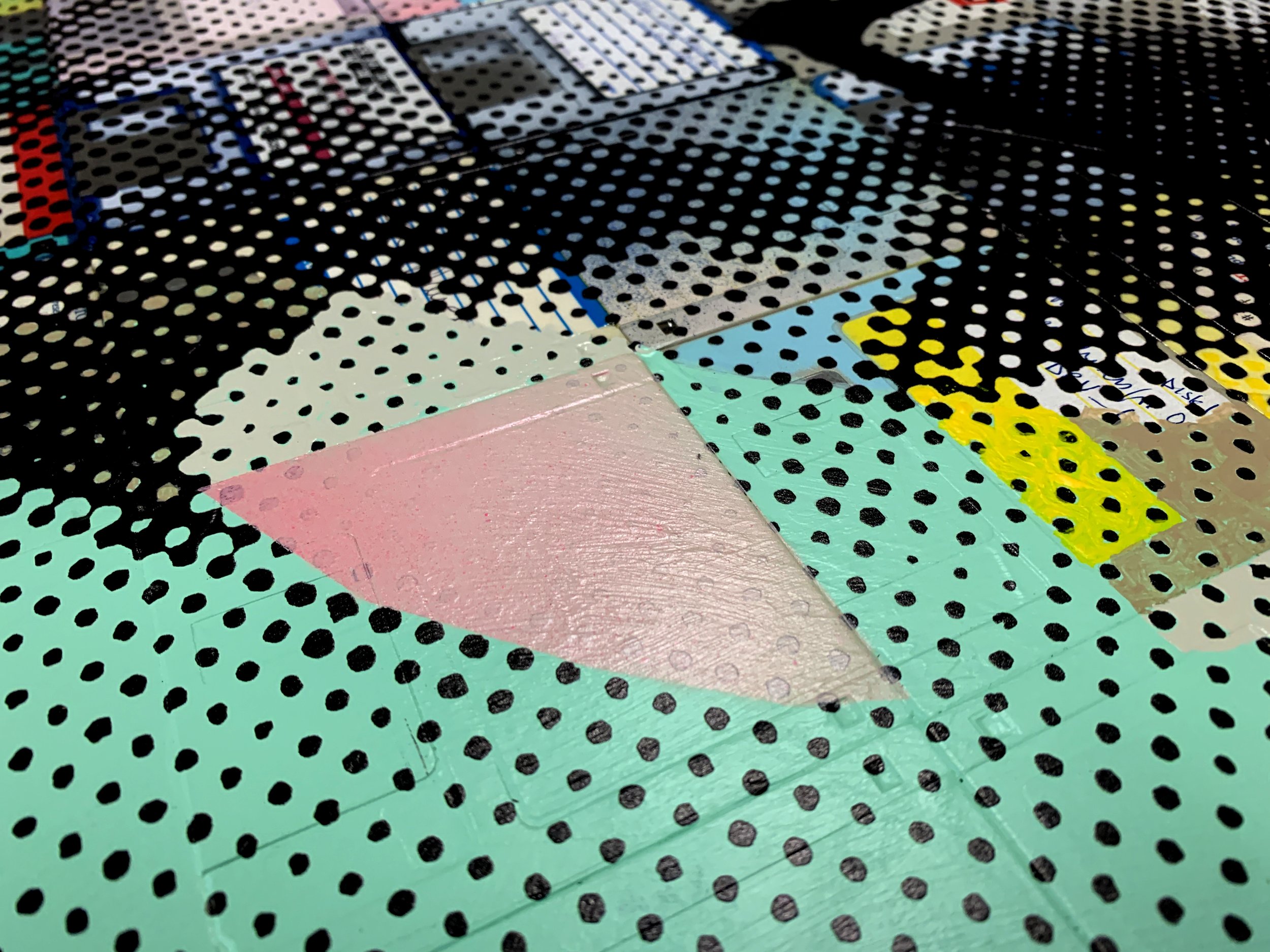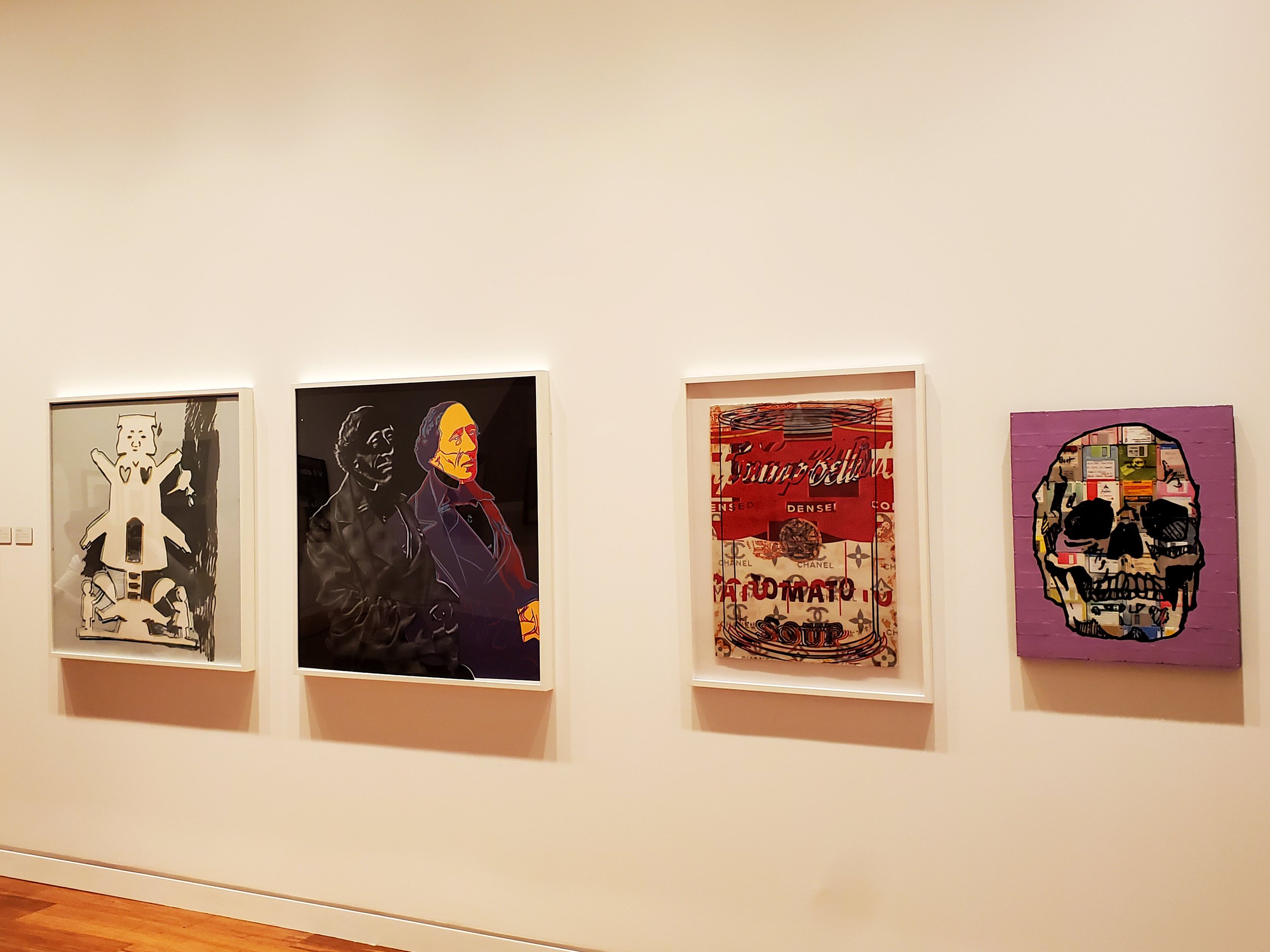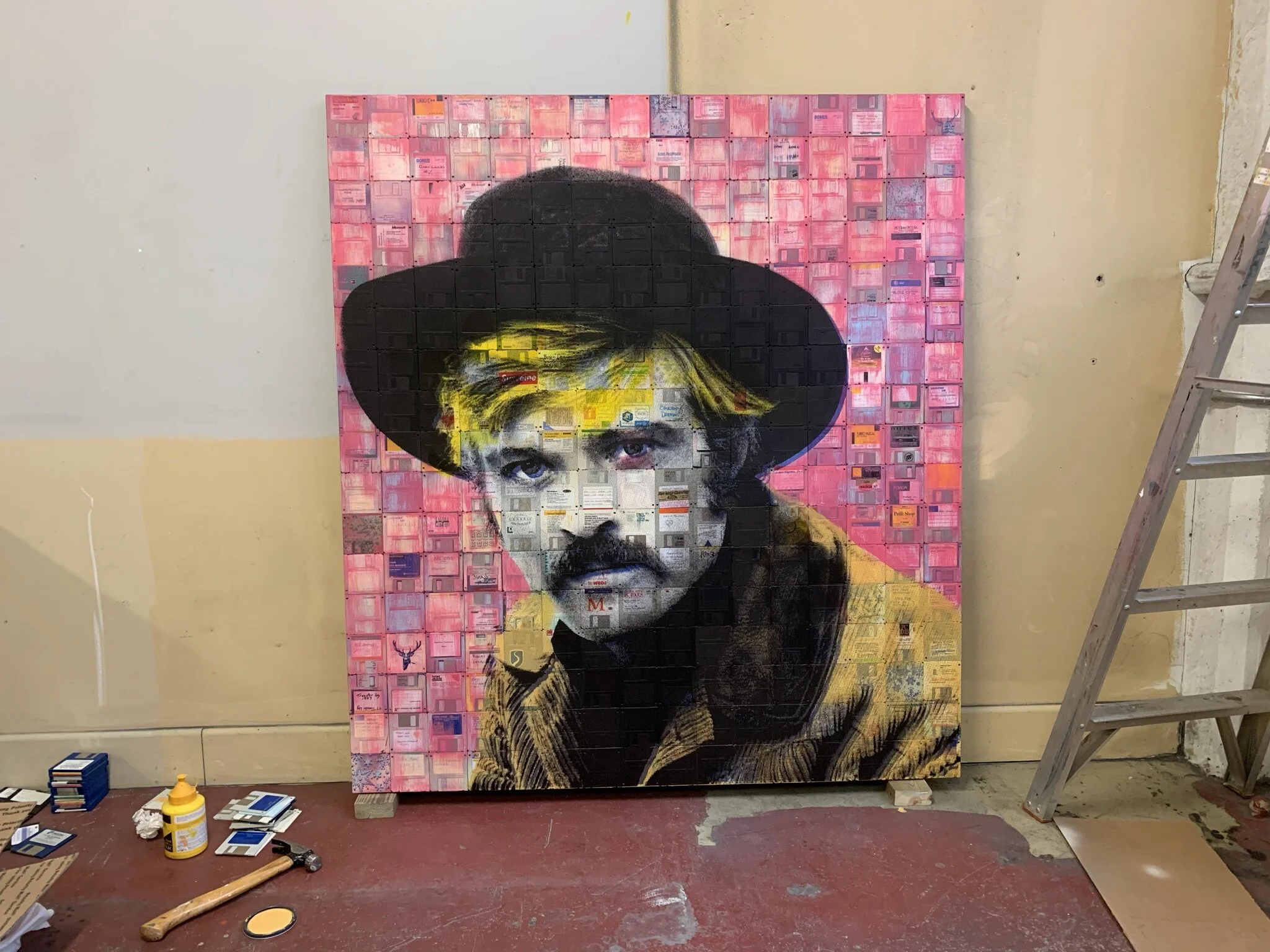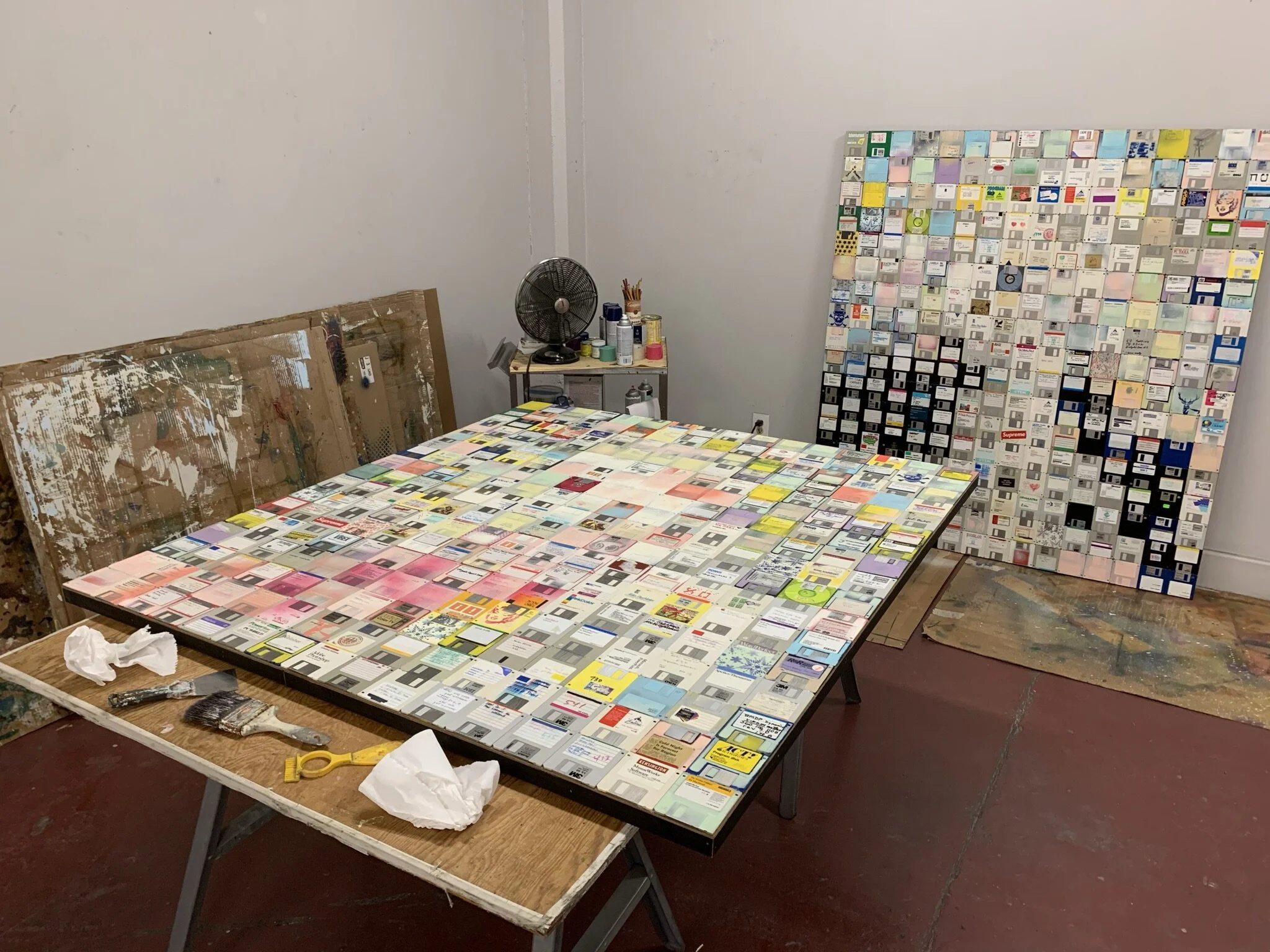
Floppy Disk Art Pop Art Paintings - Artworks from the Taylor Smith Studio
Artist Taylor Smith uses discarded floppy disks to create iconic portraits and contemporary artworks. Smith utilizes floppy disks in a wide variety of colors, laying each diskettes out like puzzle pieces and slowly arranges them by color to form a portrait of her eventual subject. Smith states that the most interesting aspect of these vintage computer floppy disks, are the handwritten or typed labels which refer back to unknown lives and projects that were essential to someone 20 or 30 years ago or more. By creating new floppy disk pop art paintings with these vintage technology disk drives, their efforts and work from so long ago live on in repurpose.
RECYCLED COMPUTER FLOPPY DISKETTE PAINTINGS
”Creating a conversation between digital technology and paint” - Taylor Smith's series of floppy disk art icon paintings are made on recycled obsolete 3.5 inch plastic computer floppy disk drives. These works explore identity, privacy and collective history through portraiture and discarded technology. Smith creates a conversation between digital technology and the artist’s hand. Within each painting, the viewer is taken on a journey of discovery by exploring the details of each computer floppy disk. It is a collaboration between the artist and the creators of the data stored on these old digital computer floppy drives where the subject is as much the actual painting surface as it is the image painted upon it. Smith observes that today we go to great lengths to create a digital identity, in addition to the actual lives we live, with the belief that these digital records are only growing in importance and will outlive us all.
Exploring the intersection between art and the technology industry, Taylor Smith began painting on found floppy diskettes when she discovered several boxes of old computer diskette drives in a storage closet from her very earliest computers. These diskettes contained archived emails, diaries, early software programs and different data sets, which at the time, Smith thought important enough to be saved. However, they had not been accessed for such a long time that the information was somewhat dated, while still remaining personal. Smith envisioned them as beautiful, flat and colorful, pieces of a puzzle that when arranged together in just such a way would make an intriguing and tactile painting surface. With the data now locked inside, this lends another dimension to each artwork that makes it forever unique and personal.
Smith now uses found and donated diskettes from many sources, including those sent by acquaintances around the world and collectors of her work. Sustainability and recycling are very important to the artist, and by repurposing these plastic and metal items, Smith is able to create art which will not end up in a landfill.
A common response to Smith‘s work is the word “originality.” The vintage software and floppy disk surfaces evoke nostalgia for the early days of software and the birth of the internet. Viewers find their own memories, hidden meanings and messages within the work. The artworks thus become very personal and viewers find meaning in the work.
Floppy diskettes were historically made in a limited palette of colors, so to begin, Smith paints and reworks the surface of each individual floppy disk. She then lays hundreds of these disks out like puzzle pieces and slowly arranges them to form a portrait of her eventual subject. She uses darker diskettes for shaded portions of a face or other areas of the painting that serve her composition before beginning on the larger subject of the work. Larger paintings require hundreds of floppy diskettes for just one work of art.
“To me, the most interesting aspect of these discarded vintage computer floppy disks are the memories contained in them. These disks have handwritten or typed labels which refer back to unknown lives and projects that were essential to someone many years ago. By creating new artworks with these technology tools, their efforts and work from so long ago live on in repurpose.” - Taylor Smith


